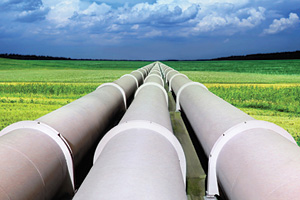
|
| Photo credit: ©istockphoto.com/ssuaphoto |
As statistics from McGraw-Hill Construction and other reputable national construction analysts come filtering in, with last year’s results and upcoming forecasts, it’s becoming increasingly apparent the residential sector is in a strong comeback mode.
At the same time nonresidential and nonbuilding aspects are mediocre and depressing, respectively. As 2014 evolves from its early startup level, we envision the disparate construction sectors developing accordingly.
• Nonresidential. This gamut of offices, retail, hotels, warehouses, educational institutions, healthcare, recreational and government buildings comprising this subsector of last year’s generally flat volume will likely project only moderate improvement from last year’s mediocre performance. While health-care expansion may lead the pack, online retail may bite deeply into strip malls, department stores and shopping centers. Little improvement should be expected.
• Infrastructure. What could prove to be the big upward spiral is the long-awaited and deliberate postponement of highways, bridges, dams and reservoirs, river and harbor developments, sewage and wastewater supply systems, missile and space facilities, power utilities and communications systems.
But even more dramatic could be the infrastructure of oil and gas pipelines plus the almost deliberate negligence that has befallen our nation’s electrical systems. Delayed in the wake of the millennial year beginning, brought on by the Enron scandal distortion of electric energy excess and manifested later by the Texas company’s malevolent misguidance, makes the need for urgent upgrading imperative to forestall brownouts and blackouts.
Only the cutback in electrical usage in the past year, due to the continuity of the commercial/industrial recession, has prevented this federal indifference from becoming the genesis of a nationwide shortage, bordering on calamity.
With conversion from coal to natural gas and too much dependence on government-subsidized renewables, major weather disruptions later in the year could still cause serious problems if no steps are taken now to remedy the situation and put extreme regulations on hold.
Unfortunately, little is coming out of Washington, D.C., to indicate urgency. Only if the private sector takes the “bull by the horns” with pipeline and electric utility upgrading will both a construction boom and consumer demand satisfaction remedy a deteriorating situation.
• Residential. This once-explosive backbone of U.S. construction surprised with a formidable 2013 comeback with rebounds in both single-family and multifamily housing. Although the inventory of unsold housing is shrinking, with foreclosures down, and demand and pricing up, more than half of housing units are shifting toward rental or long-term leasing. With overseas investment an additional factor, expect 2014 to expand the housing comeback.
Fed faces quandary
With the advent of Janet Yellen as chair of the Federal Reserve Board at the crucial point of a U.S. economy ready to spring forward despite the cloud of unemployment still hanging over its head, new rumblings of a change are coming by the Federal Reserve Board’s potential Fed funds interest rate increase.
Although any upward move in the Fed funds rate will not be coming until 2015, the “tapering” from a previous multi-month high of $85 billion in monthly purchases of U.S. Treasury paper and mortgage-backed derivatives from major banks, will likely ease periodically throughout 2014.
Although Chairman Yellen’s policies tend to duplicate ex-chairman Ben Bernanke’s “bearish” economic stance, the expected 2014 gross domestic product growth factor will likely force the Fed to bring down its quantitative easing policy with regularity throughout the year. The Fed’s slackening of Treasury bond purchases, as the single most voluminous buyer, will, in itself lower the prices of the week’s treasury auctions and increase their yield.
This will pressure commercial interest rates to slowly move up as the year progresses, despite the Federal Reserve Board’s position of restraint. Such commercial interest rate increases will anticipate an expectant economic expansion.
With the Federal Reserve Board caught in a vise of its own making by focusing on unemployment as a major factor for its funds increase from the effective “zero” position taken three years ago, the new Fed chair will have to provide a balanced direction going forward.
It is likely Yellen will be faced with an increasingly muscular 2014 economy, continuing multiyear low inflation and creeping commercial interest rates as competition for bank loans, as well as the more aggressive use of hundreds of billions of dollars reposing on corporate balance sheets manifesting themselves.



